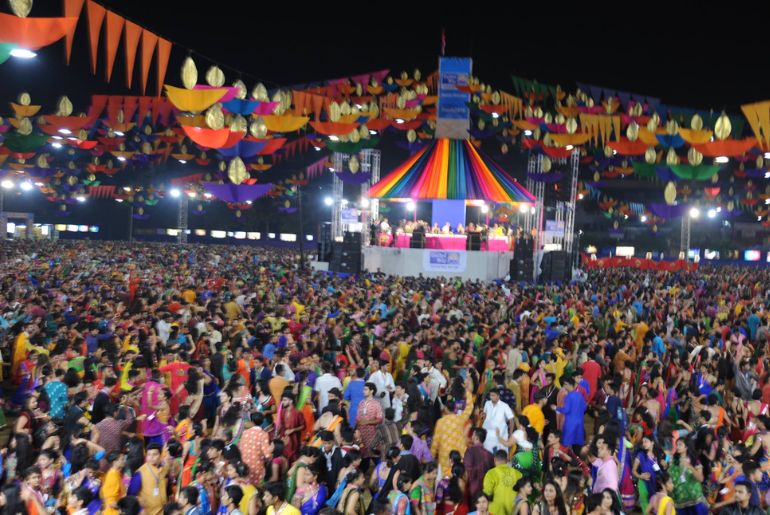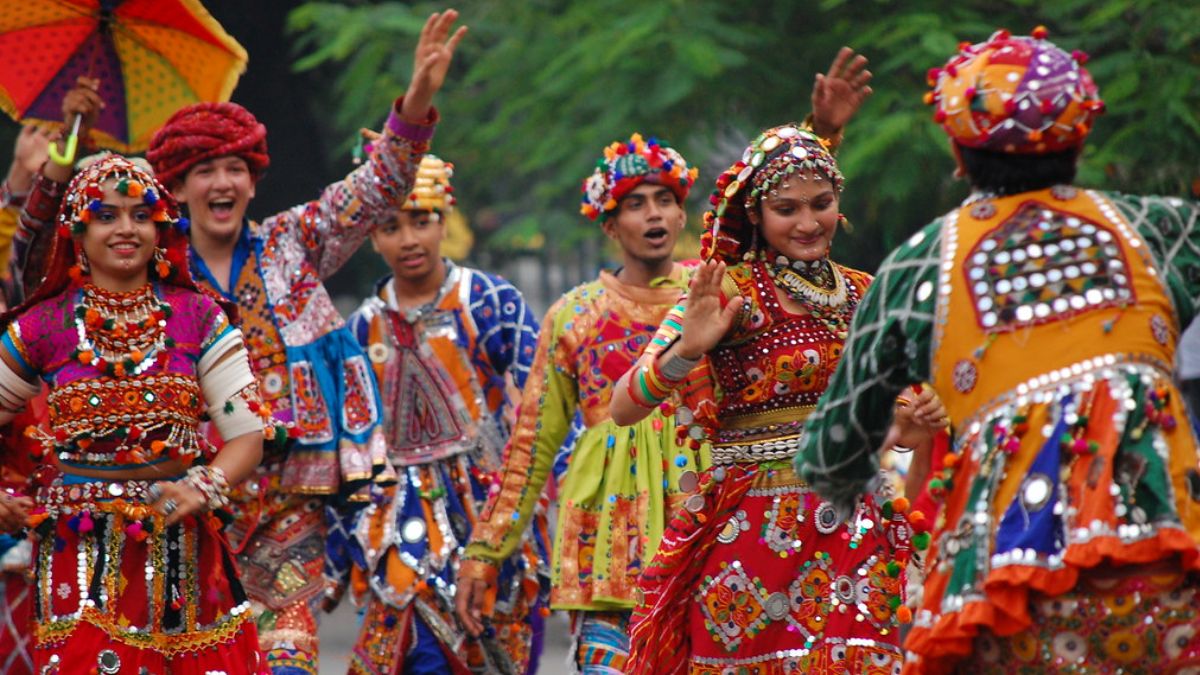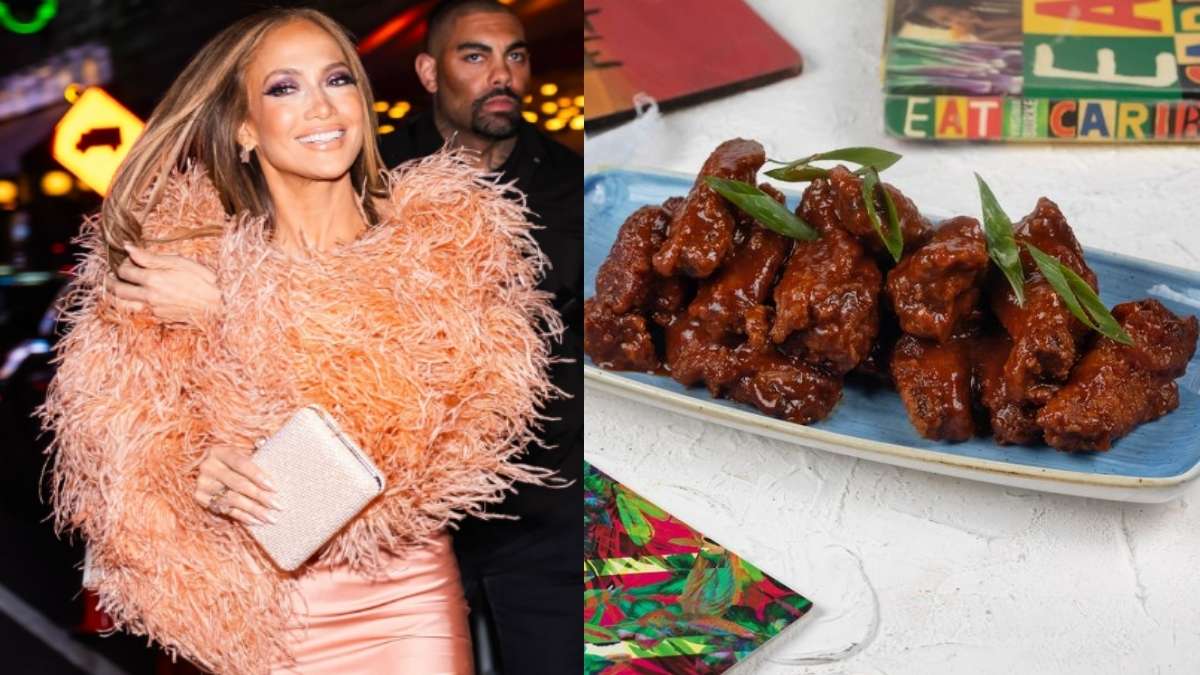Navratri is just around the corner, and I am sure all the garba lovers have already shopped for their garba outfits, purchased matching oxidised jewellery and most importantly, purchased event passes. But do you know why garba or dandiya raas are played during Navratri? Do you know the significance or history of these dance forms? Let us help you with that!
Garba: Meaning, Significance & History

Garba is also a religious and social event. It is a style of Indian dance that is mostly presented at festivals and other important events in the Indian state of Gujarat. It can also be written garaba or garbo in the singular. This circular pattern-based dance form is characterized by sweeping motions done from side to side.
Garba respects, reveres, and celebrates the feminine aspect of divinity. “Garba” is derived from the Sanskrit word garbha, which means “womb.” This dance is traditionally performed by women in a circle. This circle is made around a garbha deep (literally, “womb lamp”), which is a clay lantern with a light within.
The container of deep itself is a representation of the body that houses divinity (in the person of the goddess or Devi). To celebrate the truth that every individual possesses the divine force of Devi inside them, garba is danced around this symbol. In place of the garbha deep, Durga pictures are frequently used today to form the circle’s center.
When there are several people, concentric circles are used for garba. The circle stands for the Hindu understanding of time. Hinduism observes cycles throughout time. The Goddess, an immovable emblem in the middle of all of this endless and limitless movement, is the only thing that remains constant as time revolves, from birth to life to death to rebirth.
Also Read: Aye Haalo! 8 Jalsa Dandiya Events In Mumbai For The Best Garba Nights
Honours Womanhood And Fertility

The dance represents how the only thing that doesn’t change in an ever-changing universe is God, who is here represented in feminine form (jagat). The dance starts out softly and picks up speed gradually. The Garba dance style honours womanhood, celebrates fertility, and pays homage to all nine varieties of mother deities.
Devotees dress in vibrant outfits and a lot of heavy jewellery—earrings, bangles, necklaces, etc.—while practising Garba. Men dress in kediyu, which are short, circular kurtas worn above the knees, with a pagadi covering their heads.
In the Dandiya Raas, men and women dance in separate circles as the sticks (dandiya) crash together to create a unified sound. The live orchestra, along with specially hired singers, is what makes Navratri so distinctive.
Also Read: Navratri: What Is The Significance Of Akhand Jyot/ Diya? Note These Important Tips
Where are you heading for Navratri this year?
Cover Image Courtesy: Flickr
For more such snackable content, interesting discoveries and latest updates on food, travel and experiences in your city, download the Curly Tales App. Download HERE.
Good news! We are on WhatsApp! Subscribe to Curly Tales WhatsApp Channel to stay up-to-date with exclusive content and BTS. Join HERE.




